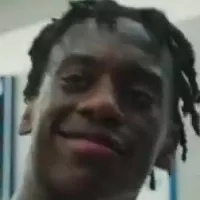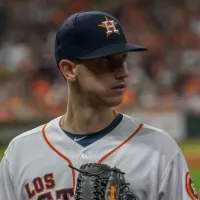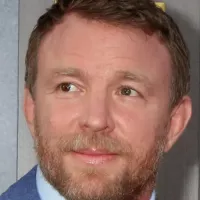Ethereum is a decentralized, open-source blockchain platform distinguished by its smart contract functionality and its native cryptocurrency, Ether (ETH). ETH is second only to Bitcoin in market capitalization among cryptocurrencies. Ethereum allows developers to build and deploy decentralized applications (dApps).
December 2013: Initial Ethereum Founders Identified
In December 2013, the initial five founders of Ethereum were identified as Vitalik Buterin, Anthony Di Iorio, Charles Hoskinson, Mihai Alisie, and Amir Chetrit. This marked the foundation of the team that would bring Ethereum to life.
2013: Ethereum White Paper Proposed by Vitalik Buterin
In 2013, Vitalik Buterin initially described Ethereum in a white paper, outlining a way to build decentralized applications. He argued that blockchain technology could extend beyond just money and needed a more robust language for application development.
August 2014: Ethereum Crowd Sale Concludes
In August 2014, the online public crowd sale for Ethereum concluded. Participants purchased the Ethereum value token (ether) with bitcoin, which funded the development of the platform.
2014: Additional Founders Join Ethereum Project
In early 2014, Joseph Lubin, Gavin Wood, and Jeffrey Wilcke were added as founders to the Ethereum project, expanding the core team responsible for its development.
2014: Ethereum Prototypes Developed
Over 18 months in 2014 and 2015, the Ethereum Foundation developed several codenamed prototypes as part of their proof-of-concept series, leading up to the "Olympic" prototype and public beta pre-release.
July 2015: Ethereum Network Launch
In July 2015, the Ethereum network went live, marking a significant milestone in the project's history. This launch allowed for the deployment of decentralized applications and the use of smart contracts, opening new possibilities for blockchain technology.
October 2015: Etheria, First NFT Project, Deployed
In October 2015, Etheria, the first NFT project featuring a 3D map of tradable tiles, was deployed to the Ethereum network, showcasing the early potential for non-fungible tokens on the platform.
November 2015: ERC-20 Token Standard Proposed
In November 2015, Fabian Vogelsteller proposed the ERC-20 (Ethereum Request-for-Comments #20) Token Standard, which allows for fungible tokens on the Ethereum blockchain. This standard provides an API for tokens within smart contracts.
January 2016: Ethereum's Average Transaction Throughput
As of January 2016, Ethereum averaged about 25 transactions per second, a rate that remained unchanged after the move to proof-of-stake.
June 2016: The DAO Exploitation and Ethereum Fork
In June 2016, The DAO, a decentralized autonomous organization built on Ethereum, was exploited, resulting in the theft of US$50 million in DAO tokens. This led to a contentious "hard fork" of Ethereum, creating Ethereum and Ethereum Classic.
2016: The DAO Attack Highlights Smart Contract Vulnerabilities
The 2016 attack on The DAO exposed the risk of using smart contracts on a public blockchain. Bugs and security holes were visible to all but couldn't be quickly fixed, leading to significant financial losses.
March 2017: Enterprise Ethereum Alliance (EEA) Created
In March 2017, various blockchain startups, research groups, and Fortune 500 companies announced the creation of the Enterprise Ethereum Alliance (EEA) with 30 founding members.
May 2017: EEA Membership Reaches 116 Enterprises
By May 2017, the Enterprise Ethereum Alliance (EEA) had grown to include 116 enterprise members, including companies like ConsenSys, CME Group, Microsoft, and J. P. Morgan.
July 2017: EEA Membership Exceeds 150
By July 2017, the Enterprise Ethereum Alliance (EEA) had grown to include over 150 members, with new additions such as MasterCard and Cisco Systems.
2017: CryptoKitties Launched on Ethereum
In 2017, CryptoKitties, a blockchain game featuring digital cat artwork as NFTs, was launched on the Ethereum network, gaining mainstream media attention and highlighting scalability concerns due to network capacity consumption.
2017: Network Congestion Problems related to CryptoKitties
In 2017, the Ethereum network faced congestion problems, notably in relation to the popularity of CryptoKitties.
January 2018: Ether Second-Largest Cryptocurrency
By January 2018, ether was the second-largest cryptocurrency in terms of market capitalization, trailing only behind bitcoin. This position reflected Ethereum's growing prominence in the cryptocurrency market.
January 2018: ERC-721 NFT Standard Introduced
In January 2018, the ERC-721: Non-Fungible Token Standard, the first official NFT standard on Ethereum, was published. This standardization allowed Ethereum to become central to a multi-billion dollar digital collectibles market.
2019: Virgil Griffith Arrested for North Korea Presentation
In 2019, Ethereum Foundation employee Virgil Griffith was arrested by the US government for presenting at a blockchain conference in North Korea, leading to legal repercussions.
2019: CFTC Chairman Heath Tarbert Declares ETH as a Commodity
In 2019, former CFTC Chairman Heath Tarbert stated that "ETH is a commodity", asserting the CFTC's regulatory authority over Ethereum. Subsequent leadership maintained this position.
October 2020: DeFi Protocols Reach $11 Billion Investment
As of October 2020, over US$11 billion was invested in various DeFi protocols on Ethereum. Additionally, DeFi protocols allowed synthetic versions of assets like bitcoin and gold to be tradeable on Ethereum.
March 2021: Visa Settles Stablecoin Transactions Using Ethereum
In March 2021, Visa Inc. announced that it began settling stablecoin transactions using the Ethereum blockchain, marking a significant step in integrating cryptocurrency into traditional financial systems.
April 2021: ConsenSys Receives $65 Million Investment
In April 2021, JP Morgan Chase, UBS, and MasterCard invested US$65 million into ConsenSys, a software development firm building Ethereum-related infrastructure, highlighting institutional interest in the platform.
April 2021: "Berlin" Network Upgrade Implemented
On April 14, 2021, the "Berlin" network upgrade was implemented on the Ethereum blockchain, introducing various improvements and optimizations to the network's functionality.
August 2021: Ethereum Blockchain Experiences Brief Fork
On August 27, 2021, the Ethereum blockchain experienced a brief fork due to clients running different incompatible software versions, underscoring the importance of network consensus.
2021: Ether Continues as Second-Largest Cryptocurrency
As of 2021, ether maintained its position as the second-largest cryptocurrency in terms of market capitalization, reinforcing its established role in the digital asset landscape.
2021: Virgil Griffith Pleads Guilty
In 2021, Virgil Griffith pleaded guilty to one count of conspiring to violate the International Emergency Economic Powers Act, related to his presentation in North Korea.
September 2022: Ethereum Completes "The Merge" to Proof-of-Stake
On September 15, 2022, Ethereum successfully transitioned its consensus mechanism from proof-of-work (PoW) to proof-of-stake (PoS) through an update known as "The Merge". This significantly reduced the blockchain's energy consumption by over 99%.
2022: Amendments to the Uniform Commercial Code (UCC)
In 2022, Amendments to the Uniform Commercial Code (UCC) introduced "controllable electronic records" (CERs) as a new category of personal property that includes digital assets like Ether.
March 2024: "Dencun" Upgrade Goes Live
On March 13, 2024, the "Dencun" set of upgrades went live, including EIP-4844 (Proto-Danksharding). This introduced "blobs" for general-purpose data-availability, significantly reducing costs for Ethereum Layer 2 (L2) networks.
2024: New Leadership Announced for EEA
In 2024, Paul Brody from EY was announced as the new chairperson of the EEA, with Karen Scarbrough from Microsoft as the new executive director. Vanessa Grellet also joined as a new board member.
March 2025: Ethereum's Maximum Theoretical Throughput
In March 2025, Ethereum's maximum theoretical throughput is 142 transactions per second (TPS), given its current 36 million gas limit, 12-second blocks, and 21,000 gas cost for ETH transfers.
May 2025: "Pectra" Update Launched
On May 7, 2025, the Prague-Electra ("Pectra") update was launched. It brought various updates, including EIP-7251, which increases the staking amount per validator from exactly 32 ETH to anywhere between 32 ETH to 2048 ETH, and EIP-7702, which allows for the EOA addresses to use functionality from a smart contract.
Mentioned in this timeline

Microsoft an American multinational technology corporation headquartered in Redmond Washington...
Cryptocurrency is a digital currency operating on a decentralized network...
Korea is a peninsular region in East Asia comprised of...
North Korea officially the Democratic People's Republic of Korea DPRK...

Miami is a major coastal city located in Florida United...

The domestic cat is a small domesticated carnivorous mammal and...
Trending

9 months ago AJ Dybantsa Dunks on Angel Reese, Highlights McDonald's All American Game Roster

2 months ago Alex Bregman Enters Free Agency; Red Sox Interested, Projected $160M Deal?

7 months ago Urlacher recalls fierce battles with Rodgers, defining rivalry on 'Glory Daze' podcast.

3 months ago Kyle Tucker Player Props and Chicago Cubs' Distrust in Wild Card Series

9 months ago MobLand's Global Success: 8 Million Viewers, Record Debut on Paramount+, Guy Ritchie Series

Quinn Hughes is an American professional ice hockey defenseman and captain of the Vancouver Canucks Drafted seventh overall in he...
Popular

Carson Beck is an American college football quarterback currently playing...

XXXTentacion born Jahseh Dwayne Ricardo Onfroy was a controversial yet...
Curt Cignetti is an American college football coach currently the...

Stranger Things created by the Duffer Brothers is a popular...
WWE Raw a professional wrestling television program by WWE airs...

Marco Rubio is an American politician attorney and diplomat He...
